The Gallery review – Dual-era FMV hostage thriller displays potential not fully realized
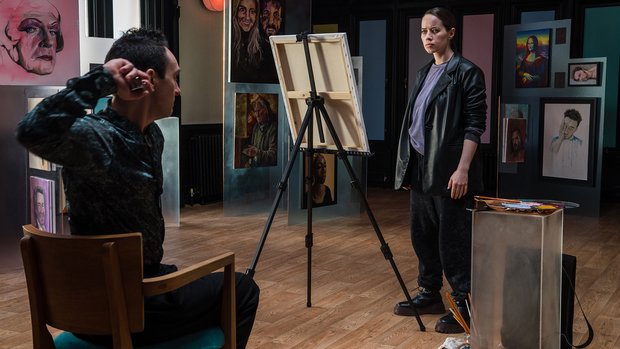
- 0 Comments
In London, in either 1981 or 2021, stands the gallery, an art house with the exterior of a castle, devoted to portraiture. Young Morgan oversees it but is struggling to make ends meet. A new portrait of a high-profile subject by an equally high-profile artist may be the last chance to put the place on the map. That’s if a troubled painter-slash-terrorist doesn’t blow it to smithereens first. This is the backdrop to The Gallery, a choose-your-own-adventure-style interactive movie by Aviary Studios and director Paul Raschid (The Complex). While players assume the role of Morgan, Dorian the terrorist is the focus of the show. A mass of contradictions, Dorian is intriguing at first glance, though an ultimate lack of concrete objective or motivation muddies the performance, even after multiple playthroughs.
The Gallery roots its gameplay entirely in making choices during its hour-long video presentation. Actually, options are presented even before you begin playing. There’s the ability to have the game pause or offer a time-constrained countdown at any decision point, but seemingly more important is choosing which of two time periods and protagonists to control. You can select a female Morgan in 1981 during the Thatcher administration, or a male Morgan in 2021 under COVID restrictions.
I like experiencing stories in chronological order, so for my first time through it was natural to go the 1981 route. After completing that story, I was intrigued to see how the 2021 experience would differ. I briefly wondered if perhaps my choices from the 1981 event would carry into the later one, though that seemed unlikely since both are available right from the beginning. I then assumed the 2021 story would adhere to one of two possibilities. The most likely was that it would make some slight choice-neutral references to the earlier event. Barring that, the 2021 story would have to be its completely own thing. As it happens, it went down a third path I hadn’t even considered: presenting an almost identical story, right down to much of the dialogue, just with the roles swapped between the two main participants. Wardrobe and hair styles differ with the time changes, of course, but even the gallery itself doesn’t look appreciably different apart from the varied collection of art pieces displayed in the same old manor room.
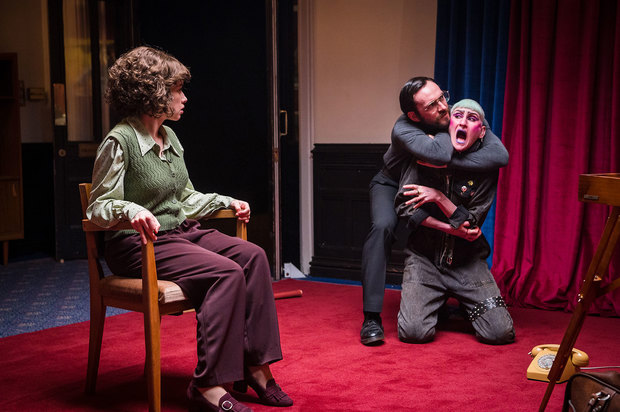
Regardless of which time period is chosen, Morgan is the curator of a small portrait art gallery who is expecting to receive an important new piece that has gained widespread media attention. In the 1981 story, it’s a portrait of the prime minster. In 2021, it’s of a prominent social media influencer. Minor differences like these abound through the two timelines, but have no real bearing on the story itself. In both cases, after Morgan closes up the gallery for the evening, they suddenly discover one last customer who slipped in unnoticed. Dorian claims to be a reproduction artist – the socially acceptable term for a forger – there to make a copy of one of the gallery’s paintings. Charming to a fault, they convince Morgan to pose for a new portrait instead.
Agreeing to be painted proves to be a bad idea, because Dorian has planted a bomb on the underside of the chair Morgan sits on. If Morgan stands up, the bomb goes off, killing Morgan and Dorian and destroying the gallery and all of its works of art. Morgan acquiesces to being painted through the night, all the while looking for a chance to escape or call for help. Despite taking place in the dead of night, the gallery is really hopping with after-hour visitors, either in person or on the phone (a landline in 1981 and a cell phone in 2021). A couple of beat patrol cops, a man with a megaphone, Morgan’s sibling and lover Nicky, among others, may make appearances depending on the player’s choices. Similarly, based on the options selected, some of these characters may or may not live to see the credits roll.
The action proceeds by showing a video scene first, which then culminates in a choice for Morgan. Typically two options are made available on-screen, although in some cases it’s three. For example, when Dorian claims to have wandered into the gallery, even though Morgan had set the alarm on the door, players can choose between accepting Dorian’s explanation or being firm on the notion that the alarm was set. Some choices cause a “Story Affected” label to appear, which indicates that your decision will have consequences later, typically involving other characters. In other cases, a “Relationship Affected” label appears along with a meter of six tick marks that go up or down. These are tied directly to Dorian and reflect Morgan’s reputation with the terrorist. A good reputation could save Morgan’s life. A bad one might have more dire consequences, both personally and for those around Morgan.
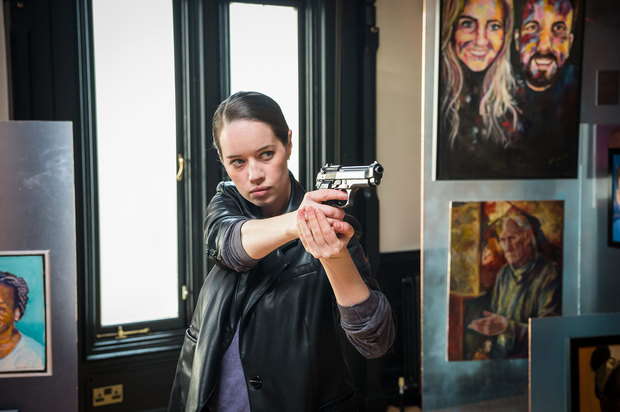
While players are making choices for Morgan, the narrative focuses squarely on Dorian, who is an intriguing mass of contradictions. They claim to come from a blue-collar background with few opportunities for education or advancement, and yet are extremely erudite and deeply knowledgeable about art history. Their background saw them as a social outcast but they have formidable people skills. They want to reform the system that grants power to a select few, but at the same time have no problem judging Morgan’s drug-abusing, codependent sibling as a parasite on society who would be better off killing themselves. This left me trying to figure out who Dorian really was and what they really wanted, right up to the closing scenes of the game. Unfortunately, the script drops the ball as Dorian’s real motives and objectives never do come into focus. My takeaway was that Dorian had a troubled childhood and so wants to hurt others, which seems far too simple and anticlimactic for the character. And since it’s anticlimactic for the character at the core of the narrative, it’s anticlimactic for the narrative itself.
Upon completing the game, a summary screen is presented to show how you did on that playthrough. This summary reminds you which characters lived and died as a result of choices made. Additionally, characters may be circled in green if Morgan finished in good standing with them, red for poor standing, and nothing if they were neutral. Also listed are the number of scenes from all playthroughs for 1981 or 2021 that have been seen and how many endings have been found.
There must be some fairly significant differences to the stories, as 1981 Morgan has 155 scenes with 12 endings, while 2021 Morgan has 184 scenes but only 6 endings. Even so, after a few replays I didn’t find the game compelling enough to seek out all the different endings for one version of Morgan, let alone two. Perhaps this would have been different if the game allowed for free saves, but alas, only a single automatic checkpoint system is available in any given playthrough. In any event, I first tried playing 1981 Morgan as friendly and altruistic to as many people as possible, including Dorian. I then took the same approach with 2021 Morgan, just to see how the story changed between the two. While there were a few minor differences, the main plot points and character moments were identical. On a third playthrough, I returned to 1981 and played Morgan as completely selfish and unsympathetic towards anyone. This resulted in getting half the characters in the game killed, which entailed different scenes, but again the main narrative thread went largely unchanged.
Throughout the production the actors do a fine job, especially the leads Anna Popplewell (The Chronicles of Narnia), who plays 1981 Morgan and 2021 Dorian, and George Blagden (Vikings), who plays 1981 Dorian and 2021 Morgan. They are both equally convincing as the scared-for-their-lives art curator and the quietly sinister terrorist. There are certain moments when the emotional states of the characters don’t jive smoothly with the branching circumstances, however. For instance, after Dorian assaults Morgan and brutally kills two police officers in an optional scene, Morgan is understandably emotionally distraught. However, as the game transitions back to the main storyline once more, Morgan reverts to being anxious but accepting of the situation and rather fascinated by Dorian.
After my first two playthroughs, I had the impression of a very static film shoot. The game is effectively two people conversing for its entirety, with one seated in a chair and the other standing at an easel. My third time through, I consciously paid attention to the cinematography and found the video was much less static than I’d thought. A wide variety of close-up shots, medium shots, camera movements, and different lighting conditions are applied to inject dynamism into the event. I’m uncertain whether it’s a good thing or not that all these camera techniques go largely unnoticed. On the one hand, I wouldn’t want the technicalities of filming to draw attention away from the actors. On the other hand, if I had not been specifically looking for them, I would have been left wishing the game was noticeably more cinematic.
While the visual style may not have impressed, the music did pick up some of the slack. Coming in only sporadically, there are various instrumental cues that serve to heighten what’s going on, usually at decision points. For instance, when a choice emerges that could surely lead to the death of one of the supporting characters, the music shifts to a tense, thumping beat almost of a heart to drive home the severity of the situation. No truly memorable themes emerge, but the soundtrack does much to set the mood whenever it’s introduced.
Final Verdict
With strong acting performances, an intriguing villain, tense music, and the possibility to explore multiple endings, The Gallery has a number of things going for it. However, a lack of any real definition of Dorian’s motivations, a relatively non-cinematic presentation, and a superfluous choice of protagonist and time period do mar the experience somewhat, or at least prevent it from reaching its potential. In the end, the game is really just average, its weaknesses not significant enough to be terrible but its strengths not enough to distinguish it in its genre. With stronger FMV games out there, including the director’s own prior work, this one is for those who enjoy character dramas and are looking to while away a few hours between more substantial outings.
Hot take
Largely ignoring the “full-motion” in full-motion video, The Gallery is let down by the lack of purpose for its otherwise intriguing antagonist in this well-acted story between hostage and terrorist.
Pros
- Actors are convincing
- Terrorist’s cultured yet blue-collar contradictions are compelling at first
- Short run length facilitates multiple playthroughs
Cons
- Missed opportunities with choice of protagonist and year
- Terrorist’s aims and motivations never come into focus
- Potential of full-motion video goes unexploited
Richard played The Gallery on PC using a review code provided by the game's publisher.

- Advertisement
- Help support AGH by advertising with us


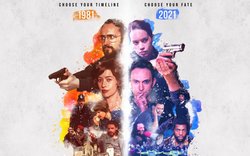







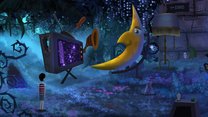
0 Comments
Want to join the discussion? Leave a comment as guest, sign in or register.
Leave a comment